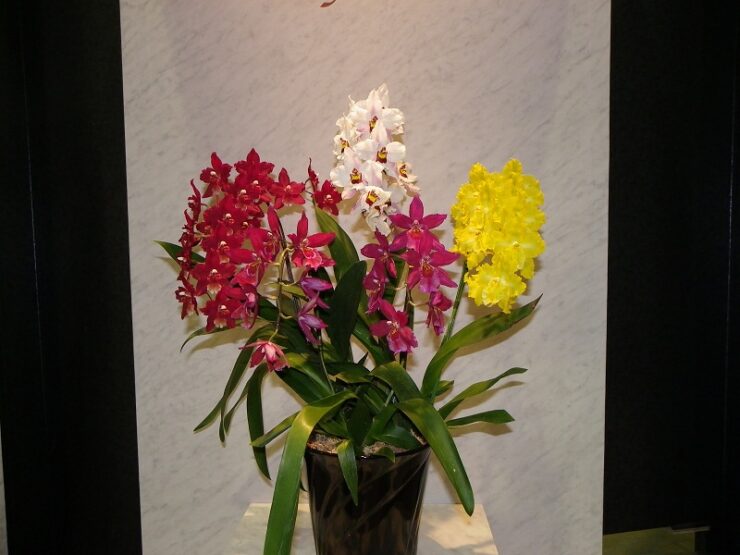Welcome to an article dedicated to the fascinating world of orchids, specifically the April-Odontoglossum. This beautiful orchid is known for its stunning blooms, which are a sight to behold. In this article, we will delve into the history, characteristics, and cultivation of the April-Odontoglossum.
The April-Odontoglossum is a type of orchid that blooms in the month of April, hence its name. It belongs to the Odontoglossum family, which is known for its diverse range of orchids. This orchid is native to the mountainous regions of South America, specifically Colombia, Ecuador, and Peru.
The April-Odontoglossum is known for its unique characteristics. It has long, slender pseudobulbs that are covered in a layer of sheaths. The leaves are leathery and elongated, with a pointed tip. The blooms of this orchid are the main attraction, with their stunning colors and patterns. The flowers are typically large and have a distinct shape, with a lip that protrudes forward.
The Roots
Odontoglossum orchids can be traced back to the Andean regions of Venezuela, Colombia, Ecuador, and Peru, where they grow in moist cloud forests at elevations of 1200 to 3800 meters. These delicate orchids earned their name from the Greek words “odontos” and “glossa”, meaning tooth and tongue respectively, due to the appearance of their callus and lips.
It was in 1816 that the botanists Humboldt, Bonblandt, and Kunth officially described the type species of the Odontoglossum orchids, which was Odontoglossum epidendroides. These orchids can be seen growing wild as terrestrial orchids on hillsides and roadsides, as well as attached to trees in their natural habitat. Their preference for cool climates is well-known, making them a popular choice for orchid enthusiasts seeking a unique and exotic addition to their collection.
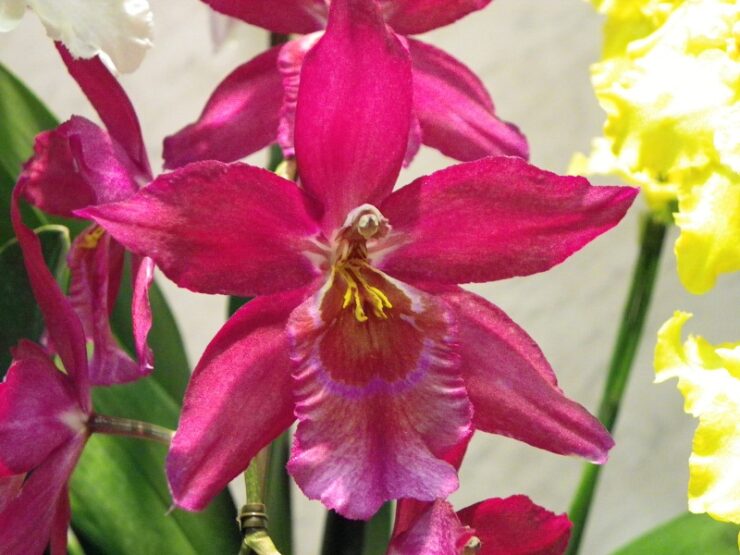
Symbolism and Cultural Significance
Beyond their natural beauty, Odontoglossum orchids hold symbolism and cultural significance in various parts of the world. Here are some examples:
- In ancient Greek mythology, orchids were believed to represent fertility and virility. The orchid’s tubers were thought to resemble testicles, hence the belief in their association with male potency.
- In China, orchids are considered a symbol of refinement, elegance, and friendship. They’re often given as gifts to express admiration or respect.
- In some parts of Europe, orchids are a symbol of luxury, exclusivity, and beauty. They’re often associated with high-end fashion and perfumery.
- In South America, Odontoglossum orchids have a rich cultural significance. They’re sometimes referred to as the “mountain orchid” and are known for their beauty and resilience in harsh mountain environments.
- In Colombia, Odontoglossum orchids are a national symbol and are often used in traditional dances and ceremonies. They’re also the inspiration behind the country’s national flower, the Cattleya trainee.
- In the language of flowers, Odontoglossum orchids represent love, beauty, and strength. They’re a popular choice for wedding bouquets and anniversary gifts, as they symbolize a strong and lasting relationship.
Overall, they hold a special place in many cultures and traditions. They’re a symbol of beauty, strength, and resilience, and their intricate blooms continue to captivate people all over the world.
Medicinal Purposes
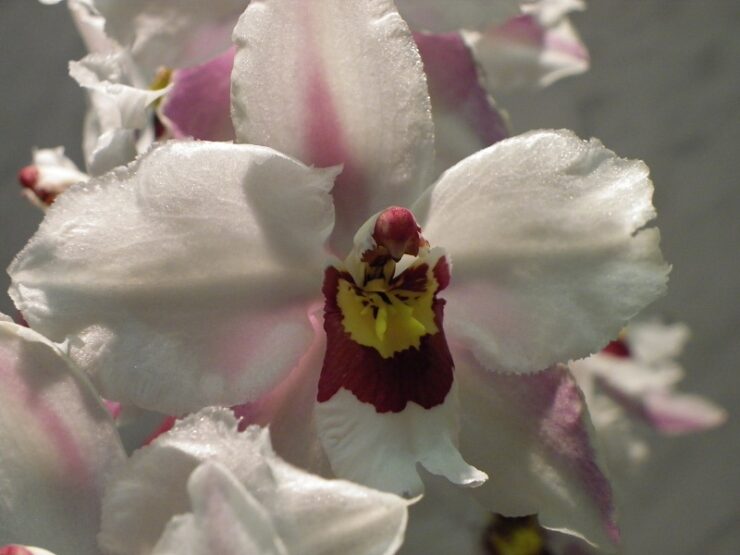
Aside from their aesthetic appeal, Odontoglossum orchids also have medicinal properties that have been used in traditional medicine for centuries. Here are some examples:
- In traditional Chinese medicine, orchid bulbs have been used for centuries to treat various ailments, including coughs, fever, and respiratory problems.
- In South America, Odontoglossum orchids have been used to treat headaches, muscle pain, and digestive issues. The orchid’s bulbs and flowers are believed to have anti-inflammatory and analgesic properties.
- In Peru, the flowers of some Odontoglossum orchids are used in traditional medicine to treat anxiety and stress. They’re also believed to have sedative properties that promote relaxation and calmness.
- In Europe, orchid extracts are sometimes used in skincare products due to their antioxidant and moisturizing properties.
Plant Description
They unique and versatile plant that can grow as epiphytes, lithophytes, and even terrestrials, depending on the specific species.
These sympodial orchids have a distinctive inflorescence that arises from the bases of their flattened pseudobulbs.
The inflorescence can be arching, erect, or pendulous, adding to the plant’s unique beauty.
The large and showy flowers of the Odontoglossum orchid come in a variety of colors, such as white, yellow, red, and green, with intricate patterns or blotches in purple or brown.
These blooms are not only beautiful but also long-lasting, remaining on the plant or as a cut flower for an extended period of time.
In flower arrangements, they can stay fresh for one to two weeks, making them a popular choice among florists and enthusiasts.
The blooming season for Odontoglossum orchids can vary depending on the species, but they are typically available year-round in most flower markets.
Whether grown in the wild or cultivated in a greenhouse, these orchids are a stunning addition to any collection, with their unique characteristics and beautiful blooms.
Odontoglossum Orchid Species
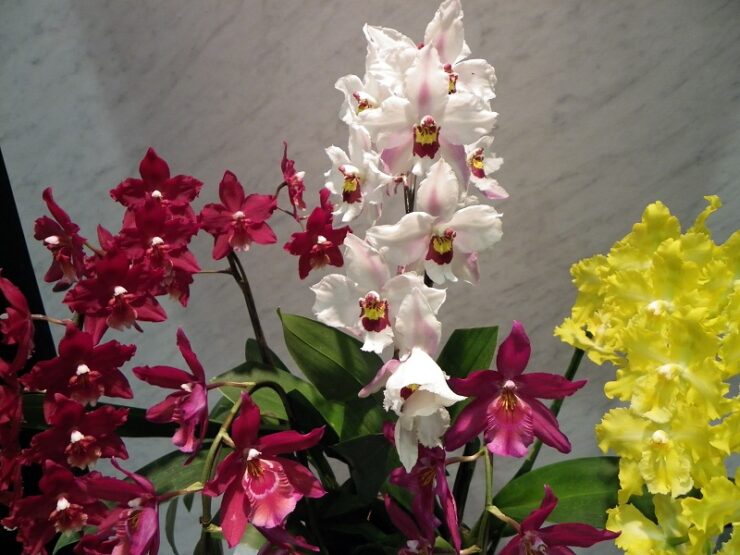
The Odontoglossum orchid genus is a fascinating group of plants that is constantly evolving as new research is conducted. While most orchid authorities suggest that there are anywhere from 100 to 175 orchid species within the genus, the World Checklist of Monocotyledons currently recognizes 67 species and 20 natural hybrids. However, this number is likely to change in the future as experts from the Royal Botanical Gardens conclude their research and molecular studies.
According to OrchidSpecies.com, the Odontoglossum orchid genus can be divided into two different groups based on their altitude. The first group consists of high-altitude orchid plants, which are characterized by their paniculate inflorescence and can bloom up to 100 flowers. This group is composed of two subgenera. The second group is made up of low-elevation orchid plants and is represented by four subgenera. These orchids have shorter inflorescences that produce up to 20 big-sized flowers.
The Odontoglossum orchid genus is further divided into six subgenera, each with its unique characteristics.
These include:
- Erectolobata
- Lindleyana
- Nevadensia
- Odontoglossum
- Serratolaminat
- Unguisepala
With such a diverse range of orchids within the genus, it’s easy to see why they’re so popular among orchid enthusiasts and collectors.
As research continues, we can expect to learn even more about the Odontoglossum orchid genus and the various species that make up this beautiful and unique group of plants. Whether you’re a seasoned orchid enthusiast or just starting, there is always something new to discover in the world of Odontoglossum orchids.
Orchid Care
If you’re looking for a stunning and unique addition to your home, the Odontoglossum orchid plant is an excellent choice. While they’re native to high-altitude Andean regions, hybrid varieties are available that can be grown in warmer climates, such as Los Angeles. Here are some practical tips to help you take care of your Odontoglossum orchid plant:
- Water your orchid plant regularly, but avoid letting it dry out completely before watering again. These orchids prefer a moist environment.
- Use a well-draining soil mixture composed of coarse sand, shredded peat, coarse perlite, and fine bark to maintain the optimal environment for your orchid.
- Odontoglossum orchids don’t like to be disturbed, so avoid repotting unless absolutely necessary.
- These orchids thrive in temperatures between 50 to 55 Fahrenheit at night and 72 to 78 Fahrenheit during the daytime.
- Place your orchid plant in a shaded spot in your home that gets bright light, as they’re used to being in forest environments.
- Use a well-balanced fertilizer with an N-P-K ratio of 3-1-2 and other beneficial orchid nutrients to keep your orchid healthy.
- When shopping for orchid plants, make sure to reduce stress for both the plant and yourself by making it your last stop or having it delivered straight to your doorstep. Orchid Republic offers customizable floral subscription packages and flower delivery in Los Angeles and Orange County, making it easy to keep your orchid plants and flower arrangements looking fresh and fabulous.
By following these tips, you can enjoy the beauty of the Odontoglossum orchid plant in your home for years to come.
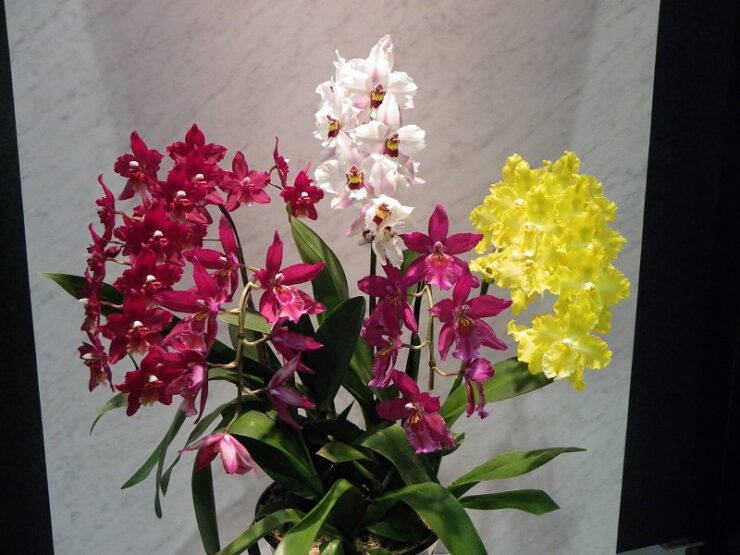
FAQ
How often should I water my April-Odontoglossum orchid?
April-Odontoglossum orchids prefer a moist environment, so water your plant generously and regularly. Avoid letting it dry out completely before watering again.
What kind of soil mixture should I use for my April-Odontoglossum orchid?
Use a well-draining soil mixture composed of 1 part coarse sand, 1 part shredded peat, 1 part coarse perlite, and 4 parts fine bark to maintain the optimal environment for your orchid.
Can I repot my April-Odontoglossum orchid?
Odontoglossum orchids don’t like to be disturbed, so avoid repotting unless it’s absolutely necessary, such as when the plant becomes root bound.
What temperature range does my April-Odontoglossum orchid prefer?
These orchids thrive in temperatures between 50 to 55 Fahrenheit at night and 72 to 78 Fahrenheit during the daytime.
How much light does my April-Odontoglossum orchid need?
Place your orchid plant in a shaded spot in your home that gets bright light, as they’re used to being in forest environments.
How do I fertilize my April-Odontoglossum orchid?
Use a well-balanced fertilizer with an N-P-K ratio of 3-1-2 and other beneficial orchid nutrients to keep your orchid healthy.
Where can I get a fresh and beautiful April-Odontoglossum orchid plant?
Orchid Republic offers customizable floral subscription packages and flower delivery in Los Angeles and Orange County, making it easy to keep your orchid plants and flower arrangements looking fresh and fabulous. You can also find them in most flower markets year-round.
Final Word
The Odontoglossum orchid is a beautiful and fascinating group of plants that have captured the hearts of many orchid enthusiasts and collectors.
From their stunning blooms to their unique characteristics and cultural significance, these orchids are truly a treasure.
Whether you’re a seasoned orchid grower or just starting, there is always something new to learn and discover in the world of Odontoglossum orchids.
With proper care and attention, these plants can thrive and bring joy to your home for years to come.
So why not add an Odontoglossum orchid to your collection today and experience their beauty for yourself?
If you like this article read more here about July and January birth orchids.
